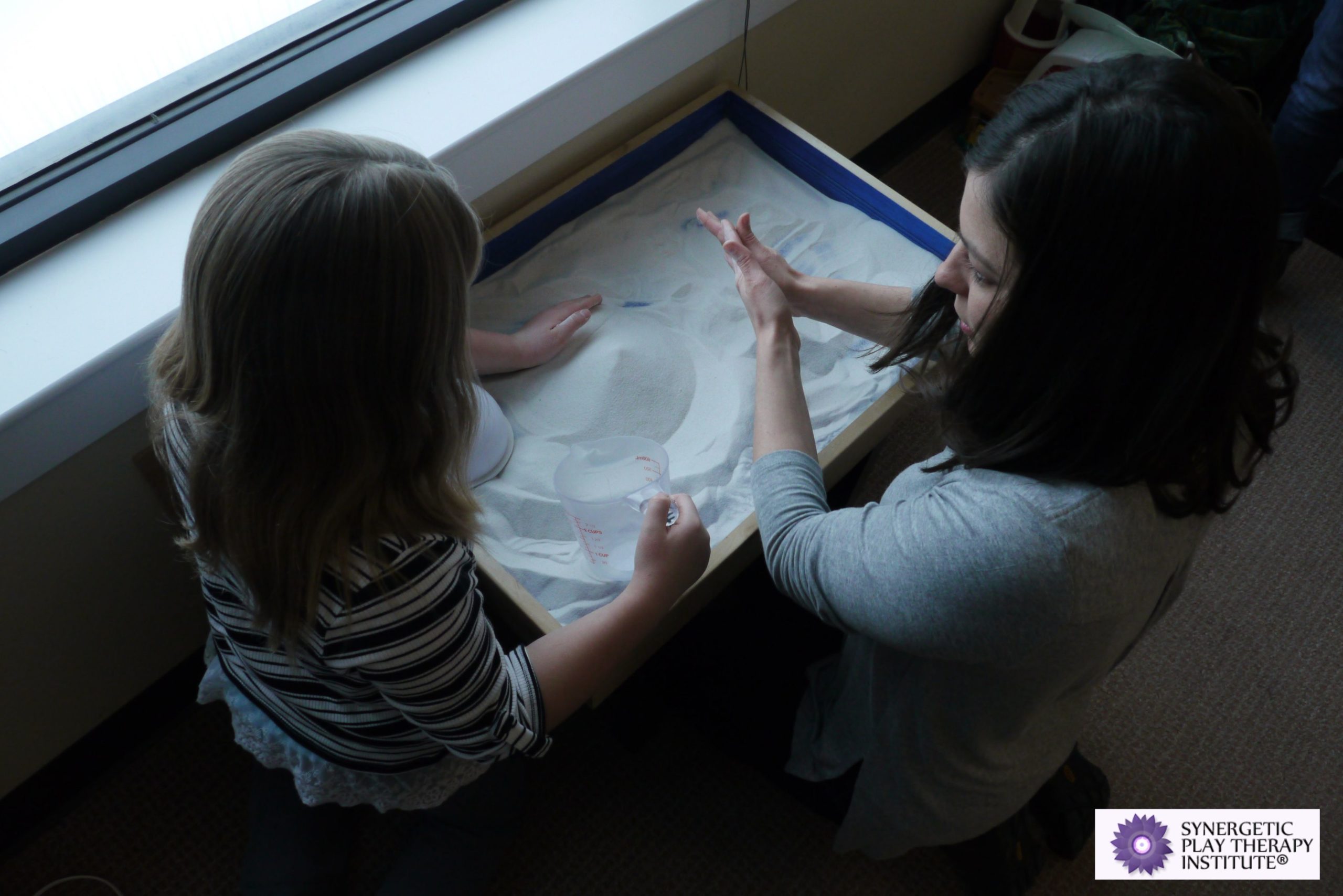by Lisa Dion, LPC, RPT-S
While not for every client or therapist, sand can calls to us and draws us in. Something about it seems to grab us and touch the depths of us. Whether we are sinking our feet into it, feeling it with our hands, or sifting it back and forth, sand creates a feeling of comfort and ground for many of us.
Try it. I invite you to go to your sand tray and to feel the sand. Don’t put any tools or toys in the sand tray, just feel the sand. Notice what happens to your attention and your senses when you allow the sand to run through your hands. Can you feel the temperature? Can you feel the weight as you shift the sand from one hand to the other and back again?
Sand has the power to allow us to get back in touch with our bodies and bring us deeply into our senses. It is hard to not be present when we are feeling sand; it’s so powerful. Yet the actual healing of the sand itself, the flow of the sand and the movement of the sand can at times get lost in the play therapy sessions. In play therapy, it’s more common for practitioners to use the sand in a sand tray as a way to take a picture or a snap shot of the child’s inner world by having the child set up figures and create scenes. Of course, this has tremendous value. But what if there were another way to use sand in the play therapy process?
What if the sand could be used as a regulation tool? What if the child used the sand itself as a way to allow their nervous system to unwind, to release?
I now invite you to bring your attention back to your sandbox. I encourage you to find a plastic funnel and to play with what it feels like to have the sand run through the funnel. What happens to your body as you watch the sand fill to the top of the funnel and then release down through the tiny hole at the bottom? As you watch the sand pour out, I invite you to watch your breath and to feel the opening and closing in your own body.
With only a sift, a turkey baster, a shovel, a small bucket and a funnel, the sand tray is suddenly transformed into a regulation device. What do these tools have in common you might wonder? They all help simulate the flow of energy coursing through a nervous system.
As you watch the smooth flow of the sand, can you notice where your body feels stuck and where you don’t feel stuck? Do you notice a natural flow and rhythm that your body can sync with as you watch the sand slowly run through the funnel? For just one moment, let the sand do its magic on your nervous system and bring you back to yourself.
As the child begins to explore the flow of the sand and the feel of the sand, their senses are activated and they begin to come back to themselves. They will be able to attach back to themselves whenever they feel lost or unable to express and feel all that is happening for them inside. As the child begins to work with the sand — overflowing it, pushing it, blocking the flow, containing it, to feel it pouring it over them — each movement will start to unwind their nervous system. When they use the sand as the tool, they will instinctively find themselves able to regulate, to let go and to fully release. Their body will unwind.
While having a child act out a scene in the sandbox with figurines works and keeps your playroom cleaner, sometimes it takes a little mess on the floor to allow big shifts to happen. Watch how quickly working with the sand can change a child’s breathing, refocus their eyes and allow them to regulate. Keep a plastic sheet and a vacuum handy and get out of the box.






